Departure Date: May 1 - 10, 2025
Compiled By: Rick Wright
Trip Leaders: Rick Wright, Alison Beringer
Toll Free: 800.328.8368
Phone: 512.328.5221
France: Birds & Art in Provence 5/1/2025-5/10/2025

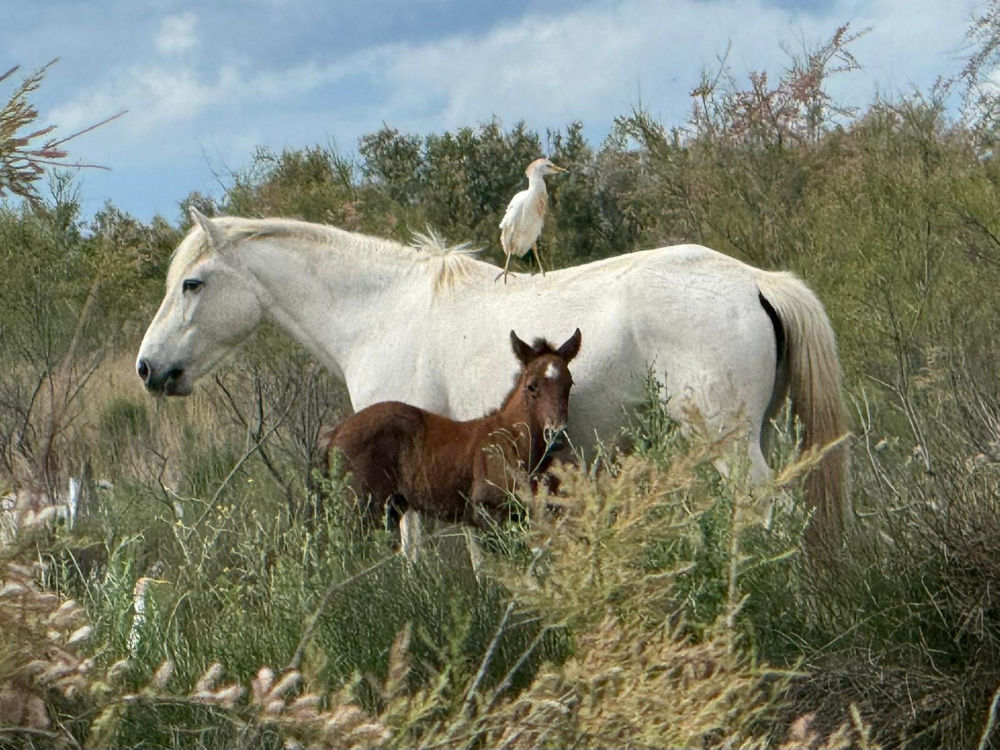
The quintessential Camargue scene – photo by Nancy Kerr
And the Gauls at the gates of Glanum.... Griffon! European Griffon Vulture!
Birds and art: an unbeatable combination, and especially so when you can pursue both interests in the same place at the same time. Our exploration of springtime Provence was full of surprising conjunctions, where cultural and natural treasures coincided to give us a glimpse into the astonishing riches of one of the most spectacularly beautiful landscapes of Europe.
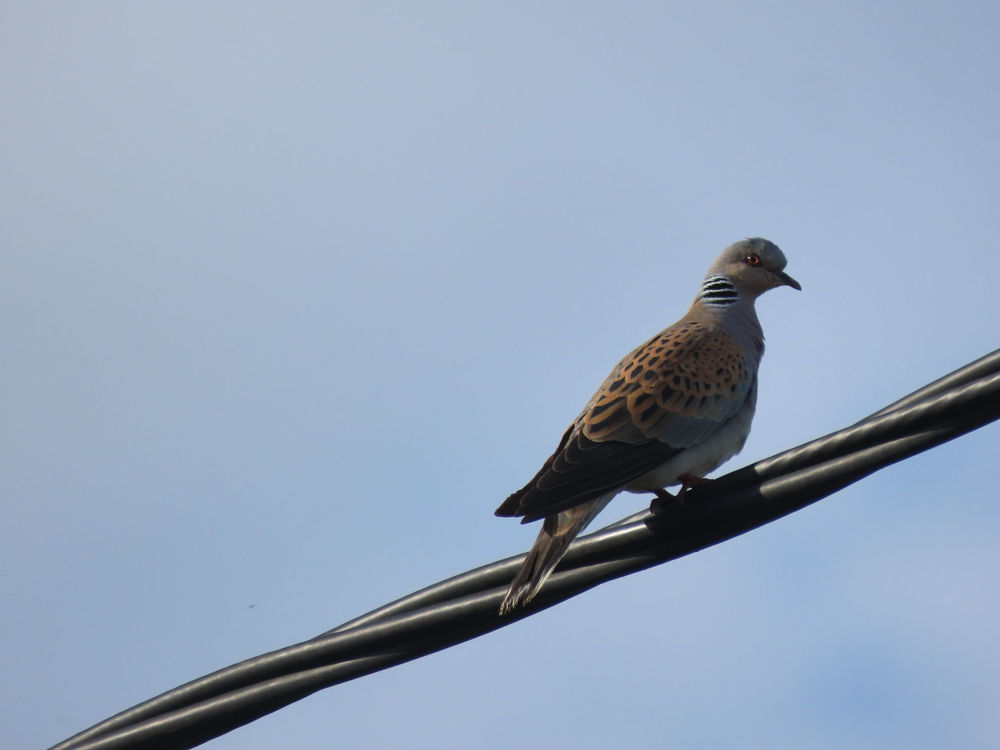
European Turtle Dove – photo by Rick Wright
We met up in Marseille for our first convivial evening together, then proceeded the next morning out into the marshes of the Camargue, crossing the Rhône on the ferry to Salin de Giraud. Salt is still a major industry here, and we marveled almost as much at the ancient evaporation pools and salt “mountains” as we did at our first Greater Flamingos—all of which owe their pink tinge to the carotenoids produced by Duneliella algae. Across the road, the trails of the Domaine de la Palissade treated us to excellent views of our first Melodious Warblers and Tawny Pipits.
After a fine lunch in a traditional Camarguais inn, we moved to our base for the rest of the tour, the five-star Hotel Jules César in Arles. Caesar didn’t actually build the hotel: that distinction belongs to the religious order of the Carmelites, whose cloister is now the heart of this stylish hotel. From Arles, we made our first longer excursion north and west, to the Pont du Gard, one of the marvels of Roman architecture and engineering. Standing beneath the imposing arches, we watched Alpine Swifts and Crag Martins at their nest holes in the venerable stones, while Common Redstarts welcomed us to the surrounding woods.
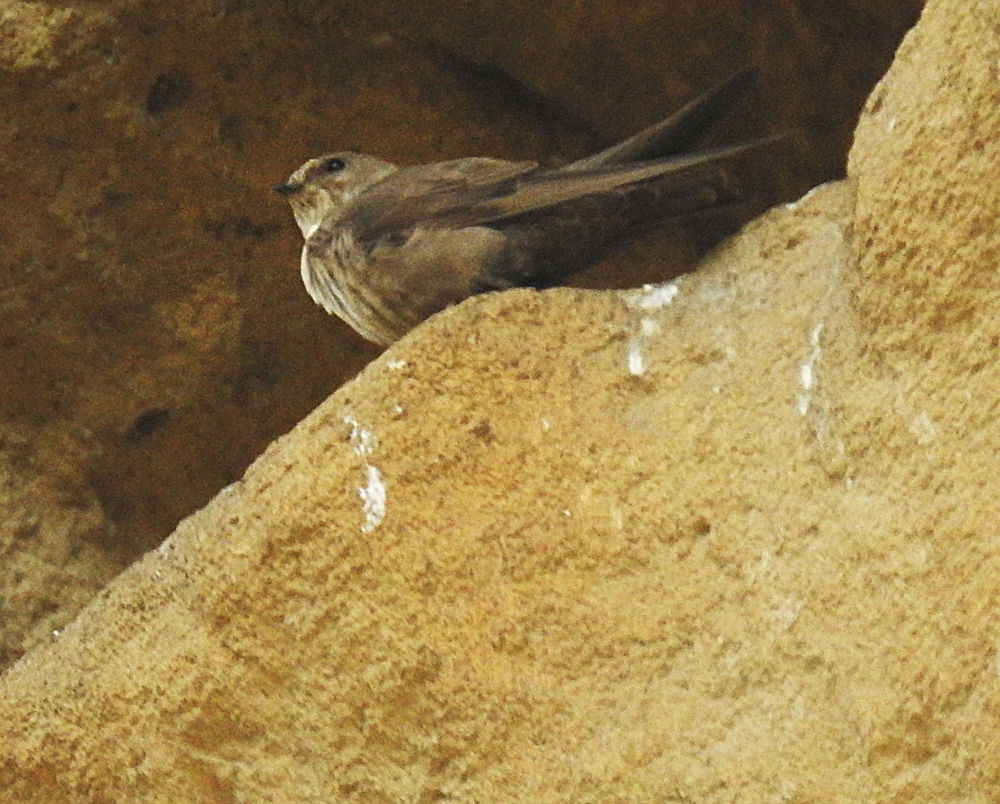
Crag Martin – photo by Betsy Pederson
We quickly fell into the happy rhythm of leisurely breakfasts, late morning starts (by birder standards!), lavish lunches, more sightseeing on our own or as a group, and dinners in the finest Arlesian restaurants.
Our visit to the “Little Camargue” took us to the banks of the Rhône-Sète Canal, begun in the last years before the French Revolution and a now a paradise for boaters, bicyclists, and above all birders. As usual, the short road through the marshes produced the trip’s longest species list, including Western Swamphens, Whiskered Terns, and White Storks. After lunch at the splendid Flamant Rose in Albaron, we made a quick detour to see the world-famous west front of the abbey church of St-Gilles, just one of the magnificent monuments of the French Romanesque on our route. A visit late that afternoon to the Museum of Ancient Arles was a chance to ponder the inspiration medieval sculptors must have found in the statues, sarcophaguses, and mosaics of Roman Arles a millennium earlier.
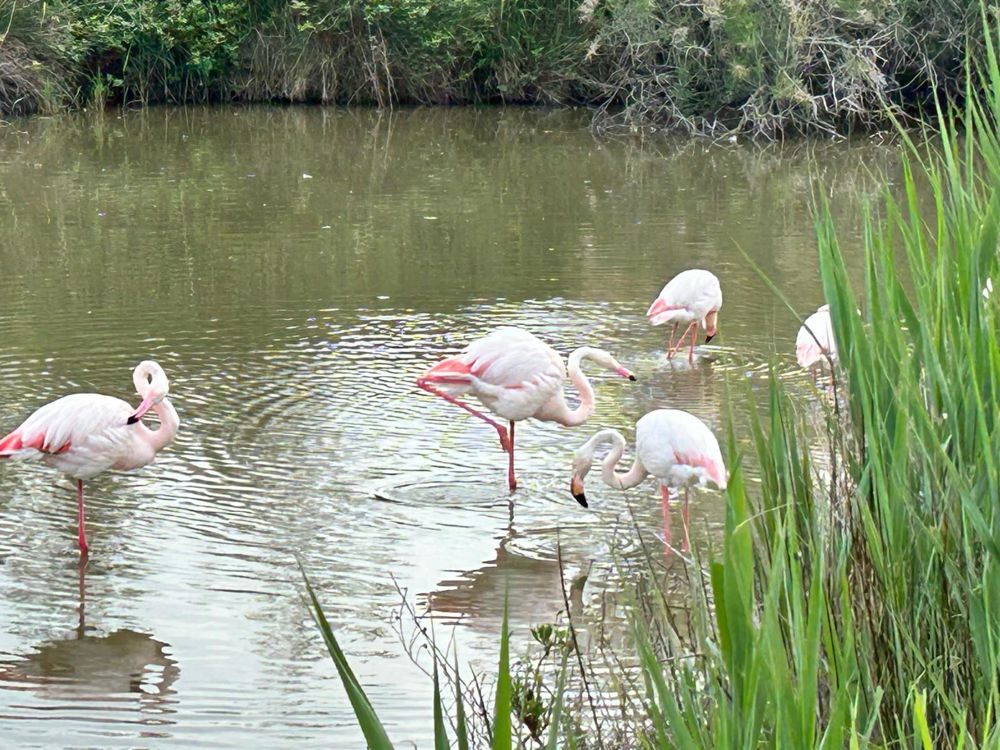
Greater Flamingos – photo by Chris Pederson
Our day in the Alpilles started at the brooding castle ruins of Les Baux, notorious for the cruelty with which its masters exercised dominion over much of Provence in the thirteenth and fourteenth centuries. As we wandered the charming streets beneath the menacing walls of the fortress, we enjoyed great looks at Sardinian Warblers, Serins, and European Goldfinches, all no doubt the descendants of birds that serenaded the human inhabitants of the area seven hundred years ago. Our lunch in the famous restaurant Au Porte Mages reminded us that the self-styled lords of Les Baux had sought legitimacy in a fake genealogy tracing their origin to Balthasar, one of the three kings of the Nativity.
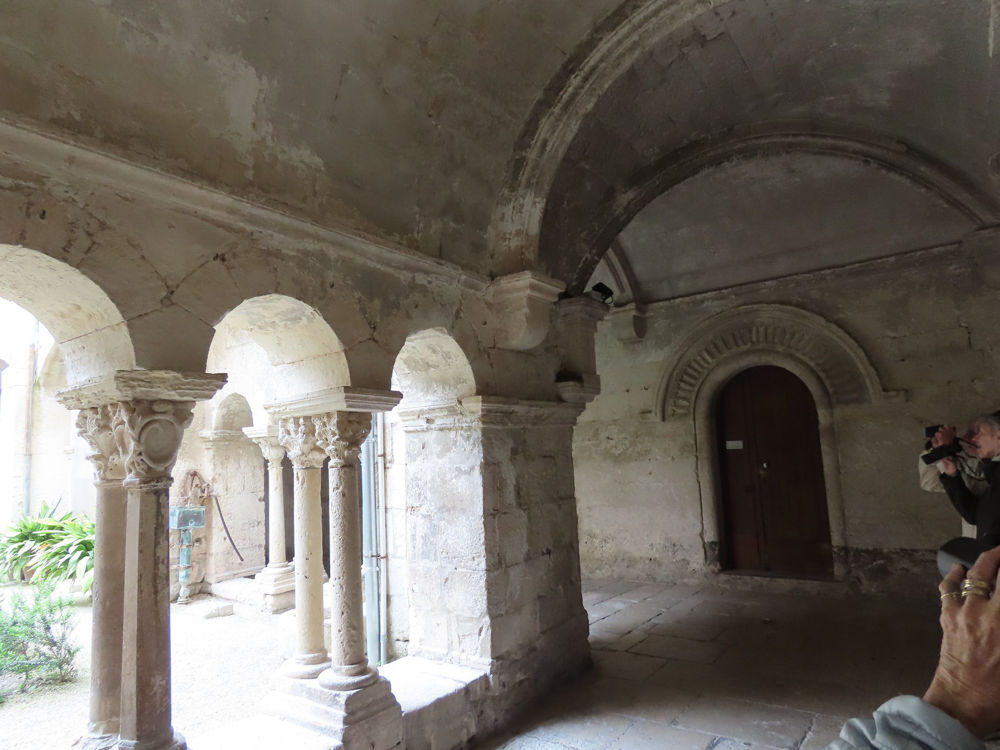
The cloister of St-Paul, with a nesting Black Redstart – photo by Rick Wright
Just down the hill stands the hospital of St-Paul de Mausole, centered on another lovely Romanesque church. St-Paul is best known for one of its nineteenth-century patients, Vincent van Gogh, who was admitted here in the spring of 1888; it was during his stay here that van Gogh created his Starry Night and other masterpieces. Here we saw our only Crested Tits of the trip. Across the road, we experienced yet another classic birds-and-art moment when our discussion of the two-thousand-year-old cenotaph and triumphal arch of the Roman city of Glanum was interrupted by the appearance of a European Griffon, a huge vulture we had seen only a few other times on our tour.
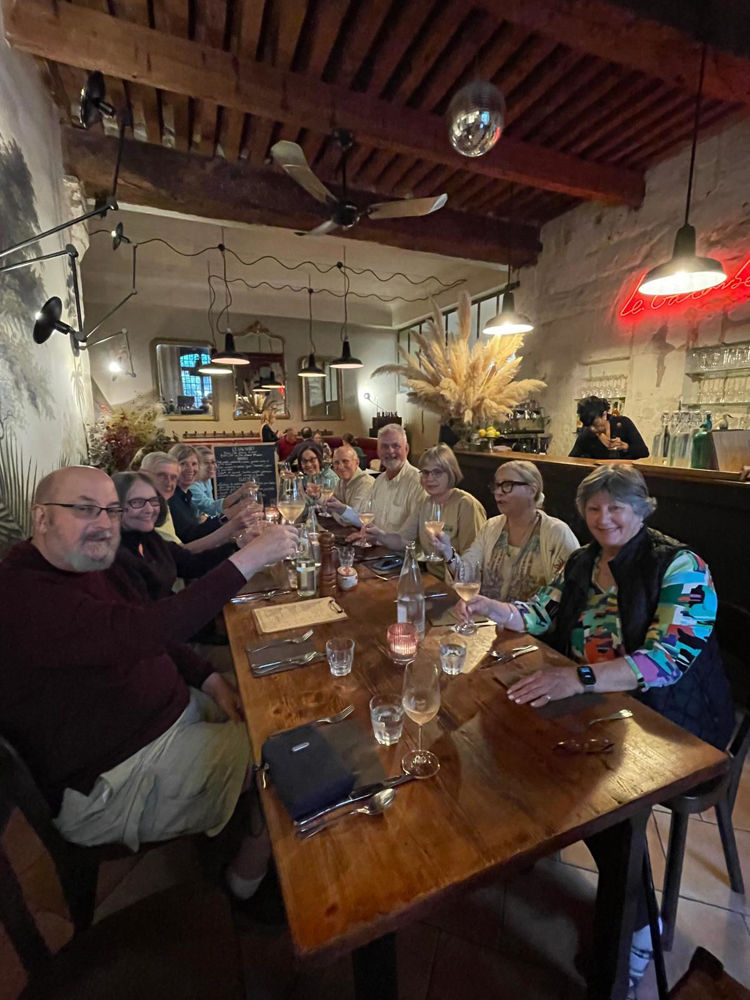
At Le Galoubet, Arles
After that full and exciting day, the next was more relaxed, with free time to explore the Wednesday market and the chance to visit the Alyscamps, the Roman and Early Christian necropolis that played a large role in Arles’s late antique and early medieval fame. We strolled slowly down the long sarcophagus-lined allée, memorably painted by van Gogh, and watched Eurasian Tree Sparrows and Black Redstarts playing among the tombs.
That evening took us to La Crau, a landscape noted equally for the ancient tradition of seasonal sheep grazing and for the healthy populations of endangered steppe birds that persist here. Our visit turned up Red-legged Partridges, Lesser Kestrels, Eurasian Hoopoes, and a breathtaking encounter with an impossibly colorful European Roller. The biggest surprise, though, was an adult Egyptian Vulture at calm roost in a nearby tree, only the second time that this very scarce scavenger has been seen on our tour.
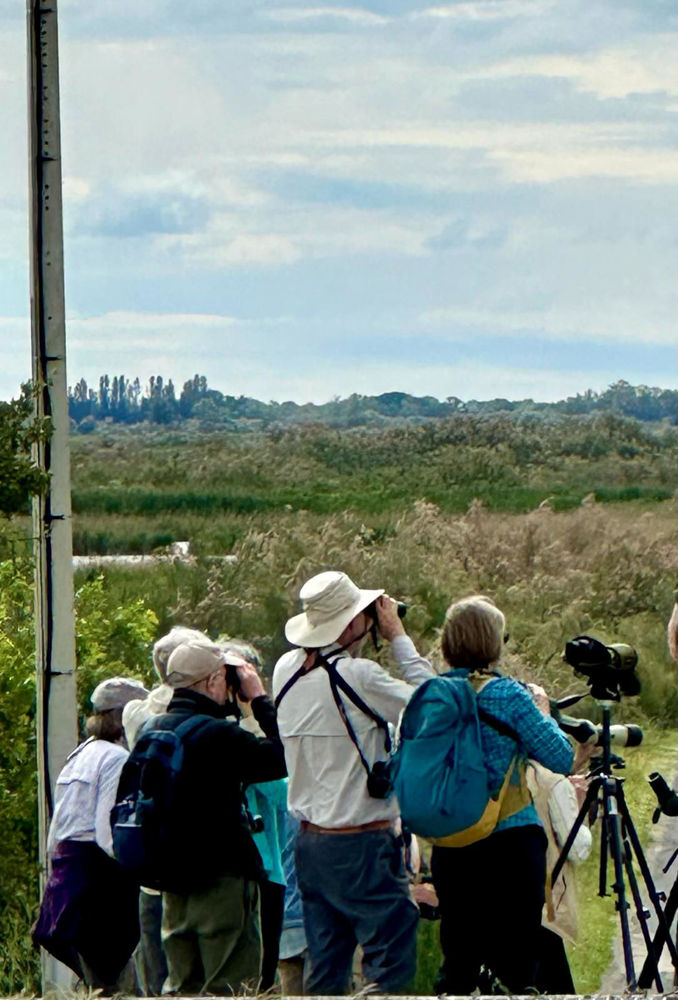
Birders in the Camargue
After concentrating on areas in the northerly Camargue, we spent the next day at its southern edge, at Les Saintes-Maries-de-la-Mer, on the edge of the Mediterranean Sea. We stopped first at the prosaically named “Small Pond North of Les Saintes-Maries,” where we had excellent views of a nice variety of shorebirds, including Kentish Plovers and gratifying numbers of orange-faced Little Stints. The real prize was a Broad-billed Sandpiper, a regional rarity (and a life bird for both leaders) that eventually gave all of us good looks. After a quick stroll on the beach, we stopped in at the city’s massive fortified church, where we saw the marble pillow on which the holy Marys rested, the painted box containing their bones, and the fascinating (and horrific) votive paintings depicting the ills and accidents from which the saints have saved the suffering over the centuries. In the crypt, the statue of Saint Sara was draped in lavish clothing and surrounded by candles lit by the Romani faithful, who have adopted her as their patroness.
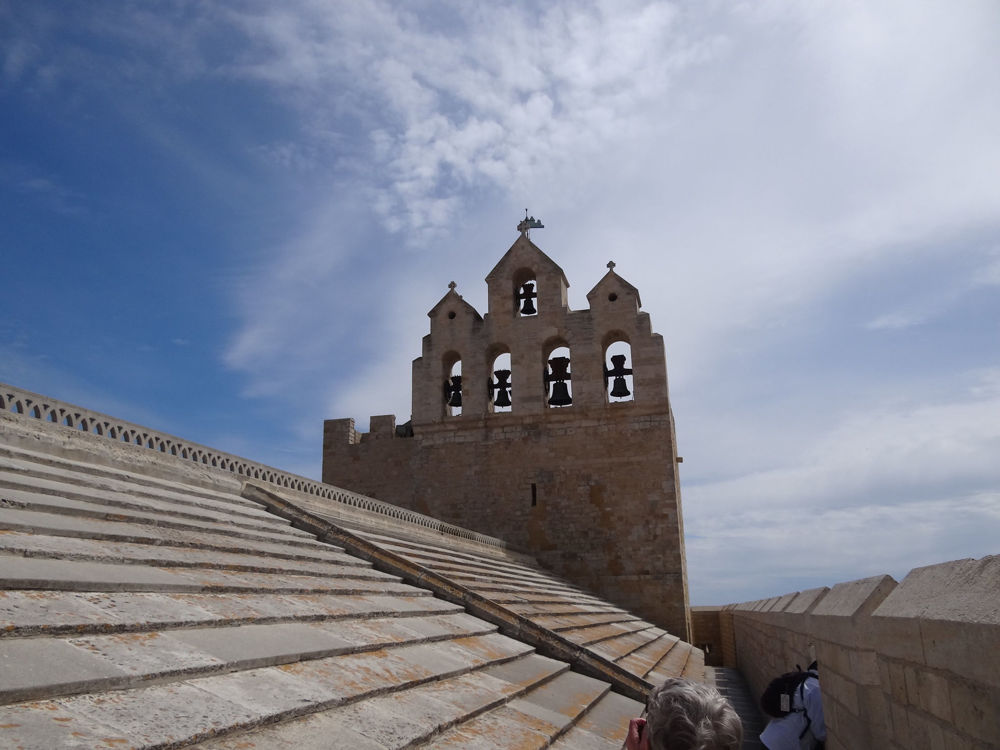
Les Saintes-Maries-de-la-mer – photo by Rick Wright
Not far from Les Saintes-Maries is the Pont de Gau, a splendid refuge built on the site of a former rehabilitation center for injured birds. This is hands down the best place in France for extremely close views of marsh dwellers, including hundreds of Greater Flamingos and huge nesting colonies of herons and ibis. Even before we entered the preserve, we had had brief but good views of a pair of Hoopoes commuting between the fields and their nest hole; then, once we had gone in, one of the birds landed in a dead tree just in front of us, lowered the bill nearly to its breast as it sang its monotonous but infinitely evocative song for several minutes.
I hope that these notes give a sense of the depth of the connection between the natural and the cultural in Provence. What these notes cannot do, though, is recapture the joy of getting to explore that connection with so delightful a set of friends, kindred souls interested in everything this captivating landscape has to offer. Thank you for spending your time with us, and we look forward to getting to see each of you again soon!
- Rick Wright and Alison Beringer
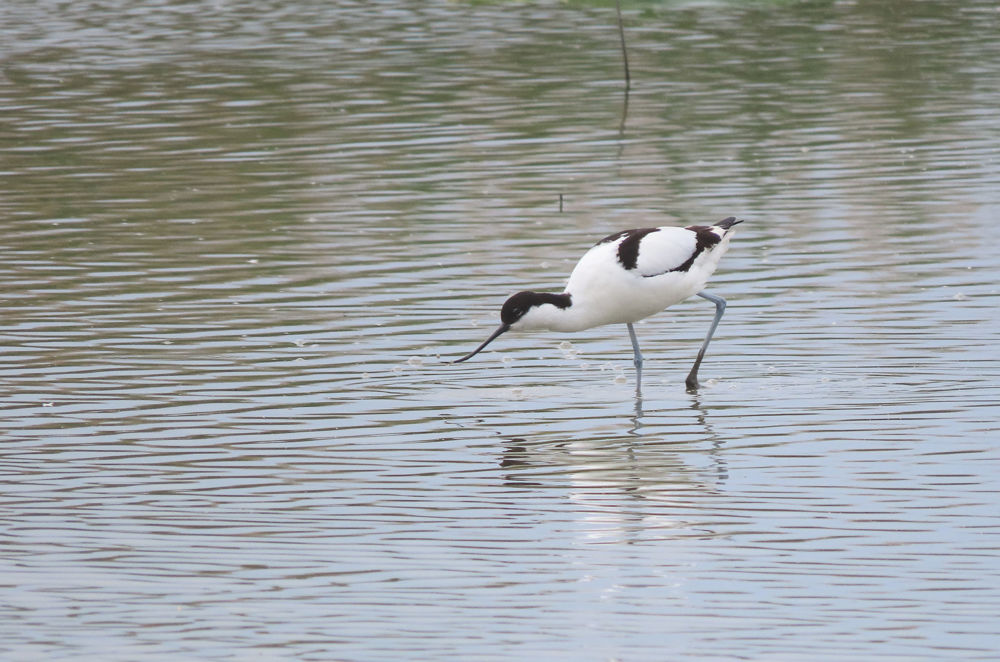
Pied Avocet – photo by Rick Wright
For more details about our sites and sightings, visit the eBird summary at:
Read the description for the next departure of this tour.
View Rick Wright's upcoming tour schedule.
ITINERARY
May 1: departure for Marseille, France.
May 2: arrival in Marseille. Assembly at our hotel 6:30 pm. Dinner 7:00 pm. Cloudy, light breezes, 70° F.
May 3: breakfast in hotel beginning 7:00 am. Departure 7:45 am. Mostly cloudy, 64° F. Domaine de la Palissade 9:40–12:15. Occasional sprinkles, 70°, light breezes. Lunch in Salin de Giraud 12:25 pm. Arrival at our Arles hotel 3:05 pm. Sunny, 76° F, calm. Ice cream 4:30 pm. Checklist review 6:30. Dinner 7:00.
May 4: breakfast in hotel beginning 7:00 am. Departure 8:00. Mostly cloudy, 66° F, calm. Pont du Gard 8:40–12:30. Lunch at Pont 12:30 pm. Light rain. Tarrascon Castle. At Arles hotel 3:15 pm. Checklist review 6:15. Dinner 7:00. Calm, dry, 66° F.
May 5: breakfast in hotel beginning 7:00 am. Departure 8:05. Little Camargue 8:50–11:55 am. Mostly cloudy, 62° F, light breeze. Lunch in Albaron 12:25 pm. St-Gilles abbatial church 2:35–3:00 pm. At Arles hotel 3:40. Museum of Ancient Arles 4:00–4:45. Checklist review 6:15. Dinner 7:00. Clear, 60° F, breezy.
May 6: breakfast in hotel beginning 7:00 am. Departure 8:00 am. 48° F, partly cloudy, windy. Les Baux 8:50–2:05. 60° F, sunny to cloudy, windy. Lunch in Les Baux 12:30 pm. Glanum and St-Paul-de-Mausole 2:25–4:15 pm. Dinner 7:10 pm. Calm, 50° F, partly cloudy.
May 7: breakfast in hotel beginning 7:00 am. Free morning for market shopping. Alyscamps 9:00. Lunch in Arles 1:30 pm. Free time in Arles. Departure 5:15 pm. Peau de Meau 5:50–8:50 pm. At hotel 9:30 pm. Calm, 50° F, clear.
May 8: breakfast in hotel beginning 7:00 am. Clear, 48° F, calm. Departure 8:30 am. Pond North of Les Stes-Maries 9:05–10:25 am. East Beach 10:45–12:05. Eglise Stes-Maries 12:15–12:35. Lunch 12:45 pm. At hotel 3:20 pm. St-Trophime cloister 6:00–6:45 pm. Dinner 7:00. At hotel 9:30 pm. Checklist review 9:45–10:00 pm. Clear, 50° F, calm.
May 9: breakfast in hotel beginning 7:00 am. Departure 8:00 am. Pont de Gau 8:25–11:35 am. 55° F, calm, cloudy, light sprinkles toward the end. At hotel 12:10 pm. Lunch12:45 pm. Checklist review 6:35 pm. Dinner 7:15 pm. Clear, 60° F, calm.
May 10: breakfast in hotel beginning 7:00 am. Departure 8:05 am. Arrival at Marseille airport 8:55. Tour ends.
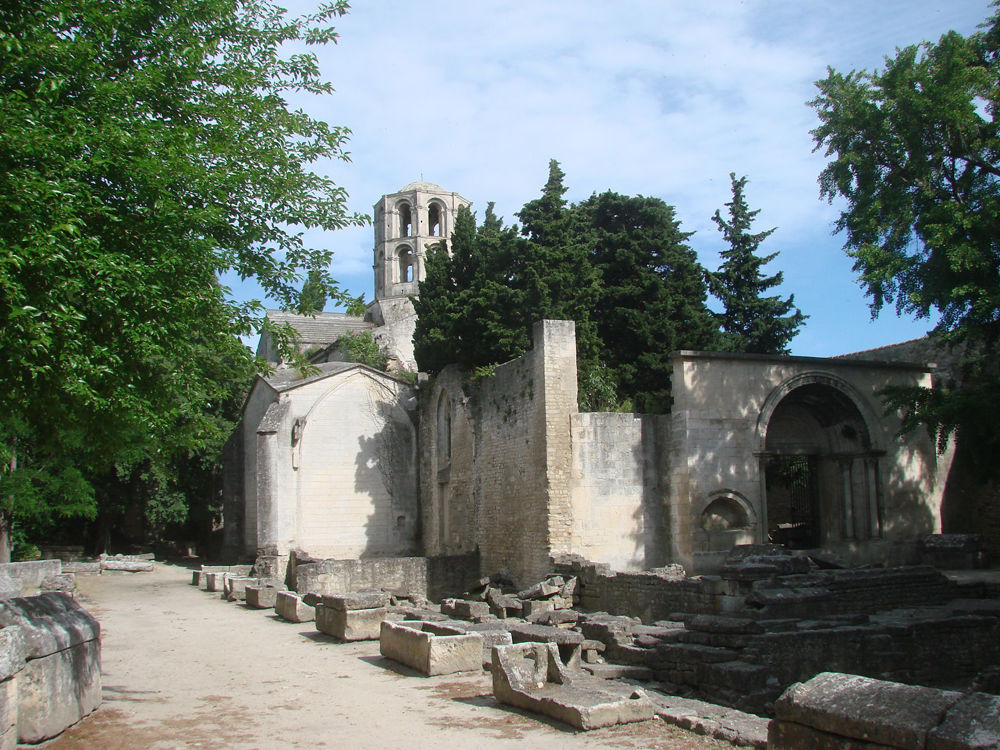
St-Honorat, the largest of the medieval churches in Les Alyscamps – photo by Rick Wright

